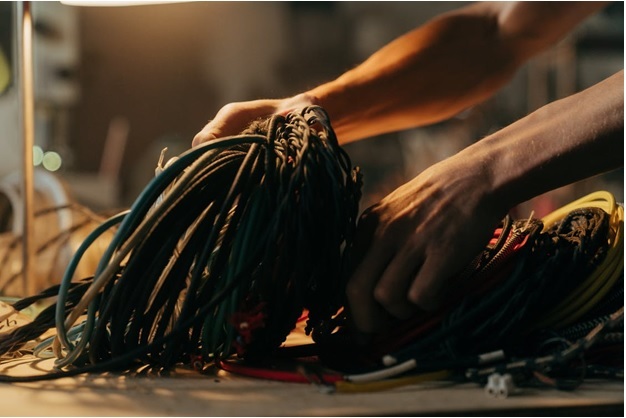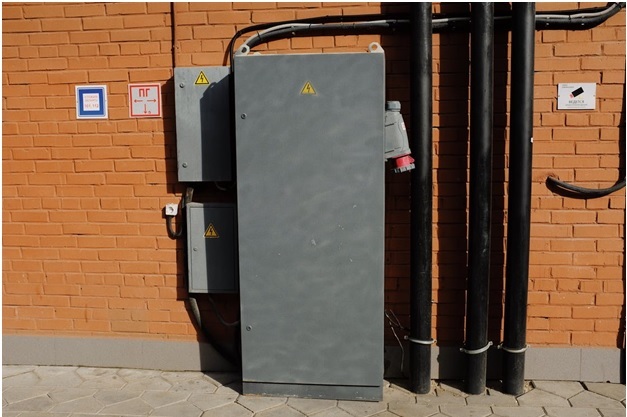Tray Cable and Cable Trays Vs. Conduit: A [Brief] Helpful Overview
26th May 2022
Traditionally, the way to lay electrical cables over long distances was through a conduit. This requires a special sheath or tube called a conduit to be laid down before the cables can be drawn through it. In many situations, this is still the standard and the case.
However, in many industries, electrical engineers are looking to a less labor-intensive process that offers a number of other advantages - in the form of tray cables and cable trays.
As opposed to conduit, cable trays are open trays on and along which bundles of cables can be arranged and laid. Some tray cable, with XLPE insulation (cross-linked polyethylene), is sunlight resistant and suitable for installation in free air and hazardous locations - although this goes according to a case-by-case basis.
Let’s take a closer look at why some choose to use tray cables, as well as what sorts of advantages it offers over the traditional conduit.
Types of Tray Cable and Conduit
The NEC defines cable trays as “a unit or assembly of units or sections and associated fittings forming a rigid structural system used to securely fasten or support cables and raceways.”
That is, cable trays are infrastructure used to support and convey electrical cables - which are not enclosed, in the manner of conduit.
By contrast, the NEC defines a conduit as a “raceway that is circular in cross-section, flexible, metallic, and liquid-tight without a nonmetallic jacket.”
That is, conduit is very like a protective “pipe” through which cables must be drawn and which encloses them fully against outside influence.
There are many different types of cable trays, including ladder trays, solid-bottom, trough, channel, wire mesh, and single rail cable trays, each of which offers distinct advantages and disadvantages in comparison to each other.
Likewise, there are a number of different types of conduit, including rigid metal conduit, intermediate metal conduit, and electrical metallic tubing, also known as EMT. Each of these offers unique strengths and weaknesses in comparison to each other as well.
But this article is not concerned with comparing the different types of cable trays and conduits to each other - it’s invested in the advantages and disadvantages of each when compared against each other. Let’s take a look at some of these.
Advantages of Tray Cable and Cable Trays

Installation in cable trays offers a number of advantages over drawing cables through conduits in many commercial, agricultural, data transfer, and industrial applications:
●Faster installation: Because cable can be laid along with trays and does not need to be drawn laboriously through it, it is not only faster to lay tray cable but also less expensive because it requires less experienced, skilled labor.
●Lower cost of maintenance: Because any section of cable along a cable tray can be easily accessed externally, it is much easier to maintain a specific section or to add new cables or remove old ones. In a conduit, they would have to be fully drawn out for service. Cables in most trays are also easily visible from outside the tray, enabling quick, cost-effective visual maintenance checks and inspections.
●Greater flexibility: Installing new tray cable anywhere along a tray is much easier than doing so with a conduit, through which the new wires would need to be drawn. Laying additional cables along a tray is quick and easy compared to drawing through the conduit.
●Better heat dissipation: Cable trays, being open, make it much easier for power and data lines to release heat which can cause overheating, damaging the cables themselves.
Disadvantages
Despite these several advantages of tray cable and cable trays, there are a number of disadvantages to them as well. They offer little protection to the cables against outside influences such as heat, flames, ultraviolet radiation, weather, moisture, and EMI.
Advantages of Conduit
Despite the cost, convenience, and maintenance advantages of tray cable and cable trays, there are still a number of advantages associated with conduit as an alternative, including but not limited to the following:
●Physical and chemical protection: Since conduits physically enclose the cables, they provide the highest level of physical protection against abrasion, chemical attack, and more. The cables within will be completely sealed off against sunlight, moisture, mechanical stress, and corrosive agents. Conduit, when sealed properly, also prevents the accumulation and transfer of dangerous or flammable gases.
●Shielding against electromagnetic interference (EMI) Many conduits are made of steel, which effectively creates a Faraday cage around enclosed cables and prevents EMI from causing issues.
●Long lifespan: Being made of steel or other durable materials, conduits are typically much more physically durable than the light aluminum trays against which they are competing.
●Protection against fire and high-heat situations: Sometimes it is not the heat produced by the cables themselves which can be an issue, but heat from the outside. Conduit shields cables from high environmental temperatures and can protect cables against fire as well.
●Available in a wide variety of materials: Tray cable is available in steel and aluminum as well as in a wide range of different synthetic materials such as polyethylene, polyamide, polypropylene, PVC, and others.
●Pleasant aesthetics: Some prefer the look of conduits to the haphazard appearance of trays, not to mention the fact that conduits can be buried or obscured behind walls, ceilings, and floors.

Disadvantages
Although there are numerous advantages to conduits, there are a number of disadvantages as well. Conduits do not effectively allow cables to dissipate heat and restrict access to the cables within. This makes it difficult to inspect the wires or locate defects. As mentioned, it is also most cost and time-intensive to draw cables through conduit.
Looking for a High-Quality, Rated Tray Cable?
We carry a wide range of power and control cables here at EWCS Wire, many of which are rated for use in exposed runs in trays as well as conduits, and which are approved for direct burial. We also carry a wide range of cables with specialized insulation and jacketing, including but not limited to XHHW, XLPE, and VNTC.
If you have any questions about our tray cables or need help choosing the proper cable for a given application, please feel free to contact us at 800-262-1598.

![Tray Cable and Cable Trays Vs. Conduit: A [Brief] Helpful Overview Tray Cable and Cable Trays Vs. Conduit: A [Brief] Helpful Overview](https://cdn11.bigcommerce.com/s-auqnu/images/stencil/190x250/uploaded_images/cabl1.jpg?t=1653550267)